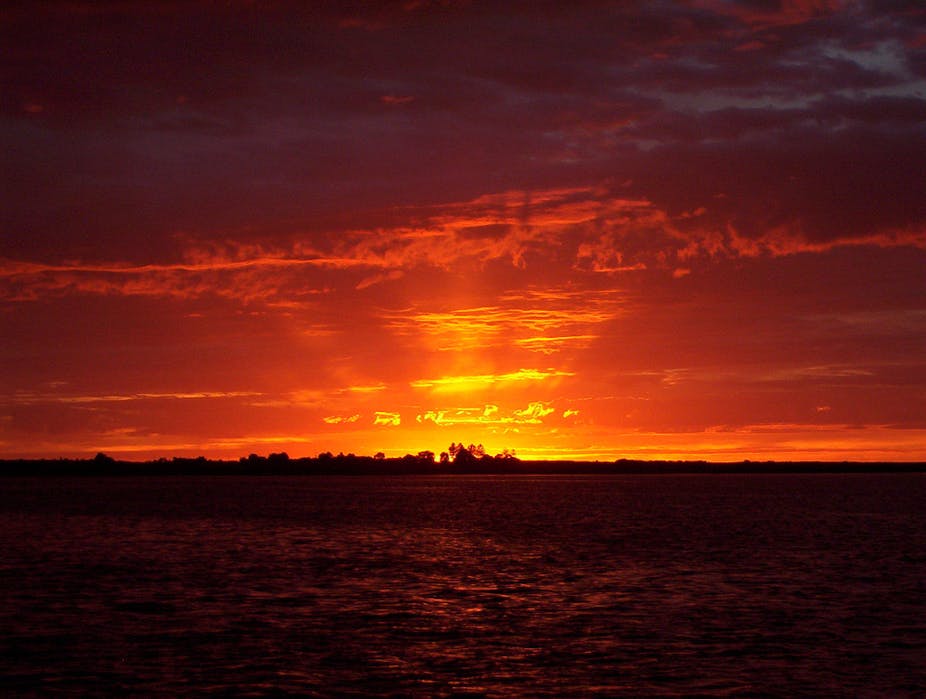Welcome to If I had a blank cheque I’d … a new series in which leading researchers reveal what they could do in their discipline if money were no object.
Today we hear from Malcolm Walter, professor of astrobiology at UNSW, and Simon George, associate professor of organic geochemistry at Macquarie University.
Project: To learn more about the origin of life on Earth
Cost: $50 million
Timeframe: Ten years
Australia hosts the oldest convincing evidence of life on Earth. It is found in the form of microbial fossils in 3.5 billion year old rocks in the Pilbara region of Western Australia.
But, beyond saying the fossils are microbial (and not everyone agrees with even this bland statement) it is very difficult to be more specific.
And yet our understanding of the origin and earliest evolution of life hinges on the interpretation of these fossils. Surely this is one of the grand challenges of science. The issue is, how can we make progress?
Well …
One key challenge – and there are many – is that palaeobiologists work primarily with the morphology of fossils (the branch of palaeobiology that deals with the form of organisms). For microbes, this rarely leads to unequivocal interpretations.
There are ways of making more specific metabolic and taxonomic attributions, but by far the most powerful is the use of hydrocarbon “biomarkers”.
These biomarkers are organic compounds, found in rocks and oils, that can be traced to biological precursors. Many are the degradation products of membrane lipids or photosynthetic pigments.
So far they have been found in rocks as old as 2.7 billion years, in the Pilbara, and a little younger in South Africa. If we could push this record back to the 3.5 billion year old rocks we could shine a beacon on the origin of life.
Biomarkers occur in rocks in extremely low concentrations, posing major analytical problems. They are also destroyed by heat, so finding them preserved in very ancient rocks that have been subjected to tectonism (crustal instability) over the aeons, and more recently to weathering, is extremely difficult. Showing they are not younger contaminants is also difficult.
There are ways to push the biomarker record back hundreds of millions of years. The first is to exploit the presence of what are called fluid inclusions – these are little time capsules of hydrocarbons trapped in bubbles in crystals in the rock.
Because they are sealed in crystals, and remnants of fluids from early in the history of the rocks, they are not contaminated by later events and are also more resistant to heating.
Fluid inclusions containing oil are known from rocks older than 3 billion years, and biomarkers in fluid inclusions have been successfully analysed in rocks from Canada that are 2.45 billion years old.
However, as the quantities of biomarkers are minute – of the order of nanograms (one billionth of a gram) – the analytical challenges are daunting.
But with a blank cheque we could:
1) Design and build the world’s most sensitive gas chromatograph-mass spectrometer, with a femtosecond (0.000000000000001 seconds) laser interface to enable analysis of single oil-bearing fluid inclusions.
A second problem is getting fresh samples away from the effects of oxidation and contamination that occur at the Earth’s surface. So:
2) Mount a campaign of deep drilling into selected rocks of the Pilbara region. Ten ultra-clean drill holes 500 metres deep would provide enough samples to produce tightly constrained data.
All this would be useless without talented people, so:
3) Hire the best people in the world for all of the above, and give them ten years to do the job.
And what would happen if we could do all of these things? Well, we’d take a quantum leap in our understanding of the origin of life.
That has to be worth something, right?
Are you an academic or researcher? What could you do with a blank cheque? Contact The Conversation here.

